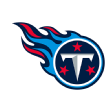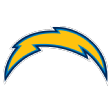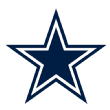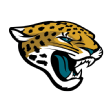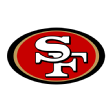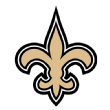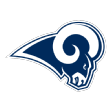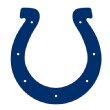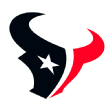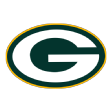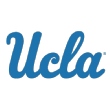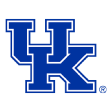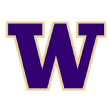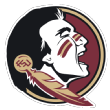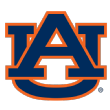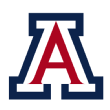How many NBA lottery picks will Kentucky have this year?
Chad Ford: As usual, Kentucky has a number of high-profile NBA draft prospects. With the Wildcats' season ending on Saturday, it's time to assess how their NBA futures are shaping up. And that includes a potential top-three pick in the NBA lottery.
More than any other college, Kentucky has dominated the NBA draft over the past few seasons. They've had 14 first-round picks in the last five drafts, including a whopping four lottery picks last season.
This year has been a bit of a disappointment and the Cats were just eliminated in the second round of the tournament.
At least two of their players look like locks to enter the NBA draft. A couple of others are on the fence. Kevin, who do you think is the best NBA prospect on this team?
Kevin Pelton: Intriguingly, if we go strictly by the numbers, my WARP projections suggest Tyler Ulis is a slightly better prospect than backcourt-mate Jamal Murray. There's a reason, however, that adding a player's ranking on your Big Board improves the quality of projections. The stats can't entirely capture the effect of Ulis' small stature.
Given that, I don't think there's much question that Murray is Kentucky's best NBA prospect. He ranks third among college prospects in my scouting-informed projections behind the consensus top two picks, Ben Simmons and Brandon Ingram. Murray's shooting ability alone should make him an effective offensive player, and if he develops as a playmaker, he could become a star.
I know in the past scouts worried about Murray's athleticism. Has his freshman season answered those questions or do they still persist?
Ford: He's the top Kentucky prospect on my board as well, and I wouldn't be surprised if he ended up a top-five pick and the first guard off the board.
While I agree that in theory Ulis is a better basketball player, his lack of size lowers his draft stock.
I think Murray has actually shown to be a better athlete than we thought coming out of high school. He's not super explosive or quick, but I think he is explosive and quick enough to play in the NBA. Combine that with a killer jump shot, a high basketball IQ and the ability to carry a team offensively when he wants to, and I think he's got a very bright future.
If teams are convinced Murray really is a point guard, then his stock even goes higher, in my opinion. But if he ends up just being a 2-guard along the lines of Brandon Roy or Joe Johnson, I still think he's going to be really good in the NBA.
The big question for scouts is who comes next among Kentucky prospects. There are really two options here: Skal Labissiere, who has all the physical tools NBA scouts are looking for, and Ulis, who has all the basketball tools scouts want.
Which would you take next? And just as importantly, where would you take them?
Pelton: Ulis, no question. According to Sports Reference, he was in the NCAA's top 10 this season in offensive box plus-minus, and one of three underclassmen in that group (Murray and Duke's Grayson Allen were the others).
And Ulis did that despite a down season from 3-point range. He improved his midrange game to make nearly half of his 2s even though his size is an issue finishing in the paint. That skill will serve him well in the NBA.
As I said, my WARP projections have him as a fringe top-10 prospect. I doubt he'll get that high and, given the issues his size will present on defense, he probably shouldn't.
But I do think he's a top-20 pick. Do you see him ending up that high?
Ford: A week ago, when John Calipari announced Ulis would go pro, I said I thought he'd go 20 to 30. However, with the weakness of this point guard crop -- especially after late fades by Wade Baldwin and Demetrius Jackson -- I think he might go higher. After Murray and Kris Dunn are off the board, I'm not sure there's a better choice.
I know you like Baldwin a lot, but I have a lot of questions given how bad Vanderbilt was this season. I'm also very intrigued by Washington freshman Dejounte Murray. His size and upside are tremendous.
But Ulis going 12 to 20? I don't think I'd have an issue. He's such a great competitor and the way he manages a game reminds me so much of a young Chris Paul, although Ulis' small stature keeps him from being a CP3-level prospect. If Ulis was three to four inches taller, I think he'd be a top-five pick in this draft.
That said, I'm on the fence about whether I'd put Ulis ahead of Labissiere. Labissiere has the size and skill set to be a terrific stretch-4 in the league someday.
I know, with the exception of a very small handful of games, he's been awful. He has shown zero toughness and has been a poor rebounder.
But NBA teams seem to be pining for big men who can shoot and protect the rim. Those guys don't come along very often.
I know you are much more skeptical given the pathetic numbers posted by Labissiere. What are your concerns and where's a realistic place in the draft where the reward outweighs the risk?
Pelton: Well, let's start with the fact that he wasn't even on the court for the final minutes of Kentucky's loss to Indiana despite Thomas Bryant's massive size advantage over Marcus Lee. At the most important point of the season, John Calipari didn't consider Labissiere one of his five best players.
Sometimes there's a tendency to talk about statistical projections like some kind of alchemy. Certainly there are some skills, like steal rate, that tend to be valued more than conventional wisdom. But for the most part, the guys the stats like -- including Ulis, the SEC player of the year -- are simply the ones who are good at playing basketball right now. Over the course of his freshman season, Labissiere just wasn't that good at playing basketball, at least by lottery pick standards.
Overall, Labissiere averaged 15.8 minutes per game. That would be the second-lowest of any player in my database the season before they were drafted. Only Daniel Orton (13.2), also a UK center, saw less action. Of course, Orton had a pretty good excuse, seeing as he was backing up DeMarcus Cousins. Labissiere didn't have that kind of competition for minutes.
There were still things to like about Labissiere's season. I think he protected the rim better than people expected, swatting better than 10 percent of opponents' 2-point attempts. That's a good sign for his ability to play center when he bulks up.
But Labissiere's 2-point percentage (52 percent) was disappointing for a college big man and his defensive rebounding was a major weakness. His projected defensive rebound percentage (17.3 percent) would be below average for a power forward (19.9 percent), let alone a center (23.2 percent). And it's not like Labissiere was competing with teammates for boards -- Kentucky was poor as a team on the defensive glass.
Where the upside outweighs the risk probably depends on the team. It might make sense for a team like the Toronto Raptors with plenty of young talent and appetite for a star to take Labissiere in the lottery. Still, I wouldn't feel comfortable taking him in the top 20 picks.
Ford:I totally understand why Labissiere is a statistical dud for all the reasons you outlined. And it's not like scouts were seeing something different. He was generally awful.
That said, Labissiere was so good at last year's Nike Hoop Summit. Calipari rightfully tried to toughen him up early and force him to play in the post. Karl-Anthony Towns, who was also a perimeter player in high school, responded in a big way. Labissiere? Not so much.
And I think when Cal started letting Labissiere play in the high post and when he started hitting 15-footers, I could see a future for him. He won't be a rebounder. He won't tough it out in the post. But could he play like Channing Frye?
I could see that and we just didn't have the data this year to really see him operate that way. If Dakari Johnson had stayed at Kentucky, I think we would've seen a different Skal.
So I think Labissiere is still worth the gamble as a 10 to 20 pick, though I hope he returns to Kentucky, gets stronger, gets his confidence back and allows us to re-evaluate him in a year. More than any prospect on out Big Board, I really feel he desperately needs another year at Kentucky.
After those three, any other UK prospects that stand out to you? Isaiah Briscoe? Marcus Lee? Alex Poythress? Someone else?
Pelton: Would you call me crazy if I told you Derek Willis? I'm always intrigued by 6-foot-9 guys who shoot 44 percent from 3-point range, though I doubt Willis can guard a position in the NBA.
The rest of those players project well below replacement level by my metric. Briscoe is a total non-shooter, Poythress not skilled enough offensively for a four-year player and Lee not well-rounded enough. Will Briscoe or Lee declare?
Ford: I will forever remain intrigued by Poythress because of the elite athletic skills. But my hopes that he would transition into a 3-and-D energy guy have never really materialized. Briscoe is a terrific physical defender, but his shooting woes and questions about his point guard skills make him a second-round pick at best. Lee has always been intriguing because of his athleticism and length. But he just hasn't progressed enough to warrant a pick.
So instead of those guys, maybe it is Willis. While he really hasn't been on the NBA radar and isn't in our Top 100, I wouldn't be surprised if Willis were the next Wildcat off the board. He's tall and he can shoot. That gets you a look.

































